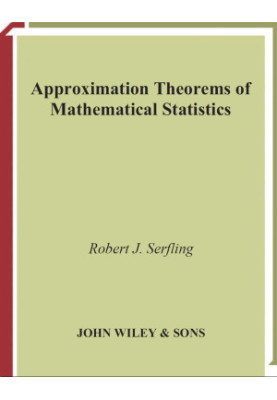Approximation Theorems of Mathematical Statistics
 Моментальне завантаження
Моментальне завантаження
після оплати (24/7)
 Широкий вибір форматів
Широкий вибір форматів
(для всіх пристроїв)
 Повна версія книги
Повна версія книги
(в т.ч. для Apple та Android)
This book covers a broad range of limit theorems useful in mathematicalstatistics, along with methods of proof and techniques of application. Themanipulation of “probability” theorems to obtain “statistical” theoremsis emphasized. It is hoped that, besides a knowledge of these basic statisticaltheorems, an appreciation on the instrumental role of probability theory anda perspective on practical needs for its further development may be gained.A one-semester course each on probability theory and mathematicalstatistics at the beginning graduate level is presupposed. However, highlypolished expertise is not necessary, the treatment here being self-containedat an elementary level. The content is readily accessible to students instatistics, general mathematics, operations research, and selected engineeringfields.Chapter 1 lays out a variety of tools and foundations basic to asymptotictheory in statistics as treated in this book. Foremost are: modes of convergenceof a sequence of random variables (convergence in distribution, convergencein probability, convergence almost surely, and convergence in therth mean); probability limit laws (the law of large numbers, the centrallimit theorem, and related results).Chapter 2 deals systematically with the usual statistics computed from asample: the sample distribution function, the sample moments, the samplequantiles, the order statistics, and cell frequency vectors. Properties such asasymptotic normality and almost sure convergence are derived. Also, deeperinsights are pursued, including R. R. Bahadur’s fruitful almost sure representationsfor sample quantiles and order statistics. Building on the resultsof Chapter 2, Chapter 3 treats the asymptotics of statistics concocted astransformations of vectors of more basic statistics. Typical examples arethe sample coefficient of variation and the chi-squared statistic. Taylorseries approximations play a key role in the methodology.The next six chapters deal with important special classes of statistics.Chapter 4 concerns statistics arising in classical parametric inference andcontingency table analysis. These include maximum likelihood estimates,likelihood ratio tests, minimum chi-square methods, and other asymptoticallyefficient procedures.Chapter 5 is devoted to the sweeping class of W. Hoeffding’s U-statistics,which elegantly and usefully generalize the notion of a sample mean. Basicconvergence theorems, probability inequalities, and structural propertiesare derived. Introduced and applied here is the important “projection”method, for approximation of a statistic of arbitrary form by a simple sumof independent random variables.Chapter 6 treats the class of R. von Mises’ “differentiable statisticalfunctions,” statistics that are formulated as functionals of the sample distributionfunction. By differentiation of such a functional in the sense of theGateaux derivative, a reduction to an approximating statistic of simplerstructure (essentially a &statistic) may be developed, leading in a quitemechanical way to the relevant convergence properties of the statisticalfunction. This powerful approach is broadly applicable, as most statistics ofinterest may be expressed either exactly or approximately as a “statisticalfunction.”Chapters 7, 8, and 9 treat statistics obtained as solutions of equations(“M-estimates ”), linear functions of order statistics (“L-estimates ”),and rank statistics (“R-estimates ”), respectively, three classes importantin robust parametric inference and in nonparametric inference. Variousmethods, including the projection method introduced in Chapter 5 and thedifferential approach of Chapter 6, are utilized in developing the asymptoticproperties of members of these classes.Chapter 10 presents a survey of approaches toward asymptotic relativeefficiency of statistical test procedures, with special emphasis on the contributionsof E. J. G. Pitman, H. Chernoff, R. R. Bahadur, and W. Hoeffding.To get to the end of the book in a one-semester course, some timeconsumingmaterial may be skipped without loss of continuity. For example,Sections 1.4, 1.1 1, 2.8, 3.6, and 4.3, and the proofs of Theorems 2.3.3Cand 9.2.6A, B, C, may be so omitted.This book evolved in conjunction with teaching such a course at TheFlorida State University in the Department of Statistics, chaired by R. A.Bradley.
LF/297675/R
Характеристики
- ФІО Автора
- Robert J
Serfling - Мова
- Англійська
- Серія
- Wiley Series in Probability and Statistics
- ISBN
- 9780471219279
- Дата виходу
- 1980


























